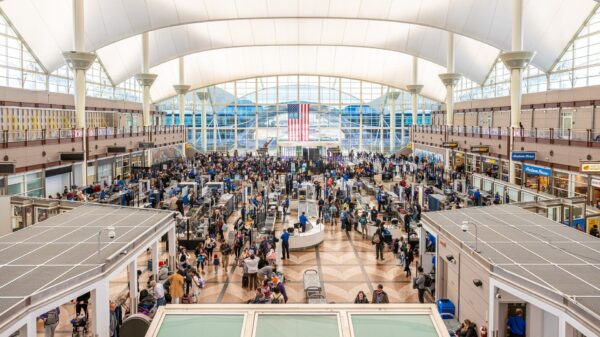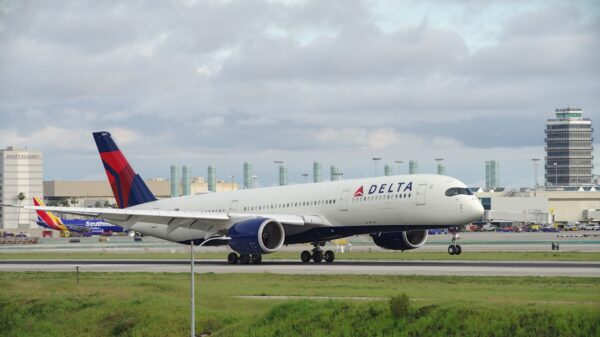The United States Department of Transportation (DOT) has proposed new regulations that could significantly impact the operations of Chinese airlines by barring them from flying over Russian airspace on routes to and from the United States. This move, initiated by the Trump Administration, aims to create a more equitable competitive landscape for U.S. carriers, which have faced operational challenges since Russia restricted airspace access to many Western airlines following the onset of the conflict in Ukraine.
The closure of Russian airspace has forced U.S. and European airlines to reroute flights to Asia, resulting in longer travel times and increased operational costs. Chinese airlines, however, have continued to utilize Russian airspace, allowing them to operate faster and more cost-effective routes. As a result, these airlines enjoy a competitive advantage, which has raised concerns among industry analysts and U.S. carriers.
According to Reuters, several major Chinese airlines, including China Eastern, have expressed opposition to the proposed ban. They argue that the restriction would add two to three hours to key routes, leading to increased fuel consumption, higher fares, and potential missed connections for travelers. China Southern has estimated that up to 2,800 passengers may need to be rebooked between November 1 and December 31 as a direct result of the proposed regulations.
United Airlines, while supporting the DOT’s proposal, has also called for similar restrictions to be applied to Hong Kong-based carriers, such as Cathay Pacific, which currently have the ability to overfly Russia. This has hindered the U.S. airline’s ability to resume direct flights to China from major cities like Newark, Washington D.C., and Chicago.
The airspace dispute originated from Russia’s decision in 2022 to close its skies to U.S. and European airlines following sanctions imposed by the White House and European leaders. Chinese airlines, not included in this ban, have expanded their presence in the market by offering shorter and more affordable flights.
The Chinese Foreign Ministry has criticized the U.S. proposal as detrimental to international cooperation. Conversely, a trade group representing U.S.-based carriers has welcomed the initiative, urging the DOT to align air traffic capacity with current travel demand.
Current Market Dynamics Between the U.S. and China
The air travel market between the U.S. and China has been primarily dominated by U.S. carriers such as United Airlines, Delta Air Lines, and American Airlines. These airlines are attempting to rebuild their networks under challenging political and operational conditions. United Airlines currently offers nonstop services from San Francisco International Airport to Beijing and Shanghai, while Delta has resumed flights from Los Angeles to Shanghai with Airbus A350 jets.
Despite these efforts, U.S. airlines continue to face disadvantages due to the Russian airspace ban, which forces them to operate longer routes and incur higher costs. Since March 2024, regulators have permitted Chinese carriers to operate up to 50 weekly flights, increasing their market share amidst ongoing discussions of parity with U.S. airlines.
Across the Pacific, the “big three” Chinese carriers—Air China, China Eastern, and China Southern—continue to dominate the market. Their ability to overfly Russia allows them to save time and fuel on U.S. routes, whereas their U.S. counterparts struggle with longer flight times.
The Role of Cathay Pacific and Potential Market Impacts
Cathay Pacific occupies a unique position in this evolving landscape. As a Hong Kong-based airline, it can still operate flights over Russia, giving it a competitive edge in terms of operational efficiency and cost. Initially exempt from the U.S. proposal to restrict Chinese carriers, Cathay Pacific’s advantage could be compromised if regulations are amended to include all carriers based in Hong Kong.
If the proposed rule is enacted, flight times for Chinese airlines on routes to the U.S. could increase significantly, resulting in higher operating costs and fares. This shift could lead to reduced capacity as airlines adjust their schedules, ultimately tightening seat availability and increasing prices on key routes.
Trade organizations have voiced support for leveling the competitive landscape but emphasize the need for careful calibration of U.S.-China flight capacity to meet demand. Incremental increases in flight frequencies are anticipated even if competitive conditions improve.
As the commercial aviation industry grapples with these developments, the long-term resolution may hinge on the reopening of Russian airspace to all carriers. However, such a change appears unlikely without a definitive resolution to the ongoing conflict in Ukraine, leaving U.S. airlines to navigate an increasingly complex and challenging market landscape.






































































